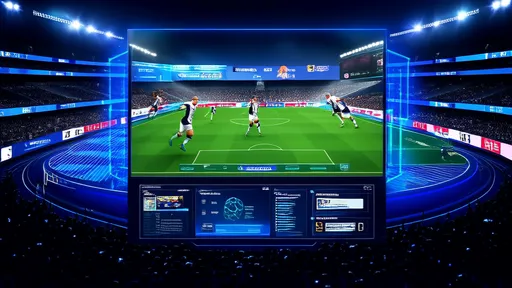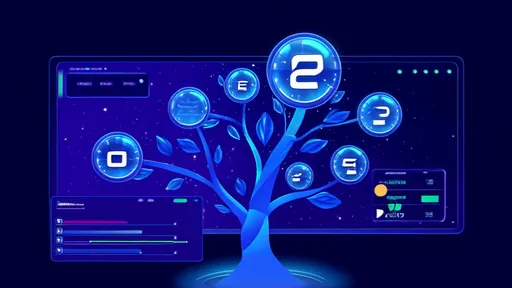The gaming landscape has undergone a seismic shift in recent years, with players no longer tethered to a single platform. What began as a niche behavior among tech-savvy enthusiasts has blossomed into a mainstream phenomenon, reshaping how we understand player engagement and platform loyalty. The modern gamer's journey often spans consoles, PCs, mobile devices, and cloud services, creating complex behavioral patterns that developers and platform holders are only beginning to comprehend.
Platform-agnostic gaming has emerged as the new normal, with players seamlessly transitioning between devices based on convenience, social factors, and game availability. Morning commutes might see them grinding mobile RPGs, while evenings could find them immersed in AAA titles on their living room consoles. Weekends may bring marathon PC gaming sessions with friends, all while cloud services lurk in the background, ready to pick up progress from any device. This fluidity represents both a challenge and opportunity for the industry.
The psychology behind device switching reveals fascinating insights about contemporary gaming habits. Players don't view their platforms as competing options but rather as complementary tools in a broader gaming arsenal. A player might choose their smartphone for quick sessions of casual or hyper-casual games, reserving their console for narrative-driven experiences that demand immersion. The PC often serves as the workhorse for competitive multiplayer titles where precision controls and high frame rates matter most. This situational awareness drives switching behavior more than any inherent platform superiority.
Social dynamics play an underappreciated role in platform switching patterns. Friend groups with mixed platform preferences force players to adopt more flexible gaming habits. Cross-platform titles have alleviated some of this pressure, but many gaming communities still coalesce around specific platforms. The result is a complex dance where players maintain multiple platform identities - their PlayStation Network profile for certain friend circles, their Steam account for others, and perhaps a mobile gaming alias for yet another social group.
Technical advancements have removed many barriers that once kept players platform-locked. Cloud save synchronization means progress follows the player across devices. Controller support on mobile devices and streaming capabilities on consoles have blurred the lines between platforms. Even input methods are converging, with touch controls being adapted for consoles and controller support becoming standard for PC ports of console games. This technological harmony enables switching rather than discouraging it.
The economic implications of multi-platform gaming behavior are profound. Players increasingly expect to purchase a game once and play it anywhere, challenging traditional platform-bound business models. Subscription services like Xbox Game Pass Ultimate and PlayStation Plus Premium recognize this shift, offering cloud gaming as a value-added feature. Meanwhile, free-to-play titles with cross-progression have shown how persistent accounts across devices can drive engagement and spending.
Device switching patterns vary dramatically by genre and play style. Strategy game players might start sessions on PC before transitioning to tablet for more relaxed play. Fighting game enthusiasts often carry controllers between platforms to maintain muscle memory. MMO players may use mobile versions for inventory management and basic tasks while reserving their primary platform for raids and group content. These genre-specific behaviors suggest that one-size-fits-all approaches to cross-platform design often miss the mark.
Regional differences add another layer of complexity to platform switching behavior. In markets with high smartphone penetration but lower console adoption, mobile-to-PC switching dominates. Western markets show stronger console-to-PC patterns, while emerging cloud gaming markets demonstrate the most platform-agnostic behavior. These geographic variances require careful consideration from developers aiming for global reach.
The future of platform switching may lie in context-aware gaming experiences that anticipate player needs. Imagine a game that recognizes when you've switched from TV to mobile and automatically adjusts UI scaling and session length. Or a title that knows you're playing on a lunch break and serves up appropriate content. As device ecosystems become more interconnected through IoT and smart home technology, these seamless transitions could become the expectation rather than the exception.
For all its benefits, multi-platform gaming isn't without friction points. Save file conflicts, control scheme mismatches, and performance variations can frustrate players moving between devices. The most successful cross-platform titles will be those that not only enable switching but actively enhance the experience of doing so. This might mean designing games with dynamic interfaces that reconfigure based on input method or creating gameplay loops that naturally accommodate varying session lengths across devices.
The industry stands at an inflection point where platform boundaries matter less than the gaming experiences they enable. Players have voted with their behavior, embracing the freedom to game wherever and whenever they choose. The companies that thrive in this new paradigm will be those that view platform switching not as a challenge to overcome but as an opportunity to create more flexible, player-centric experiences. In many ways, we're witnessing the emergence of a post-platform era in gaming - one where the game, not the hardware, takes center stage.

By /Jul 29, 2025

By /Jul 29, 2025

By /Jul 29, 2025

By /Jul 29, 2025

By /Jul 29, 2025

By /Jul 29, 2025

By /Jul 29, 2025

By /Jul 29, 2025

By /Jul 29, 2025

By /Jul 29, 2025

By /Jul 29, 2025

By /Jul 29, 2025

By /Jul 29, 2025

By /Jul 29, 2025

By /Jul 29, 2025

By /Jul 29, 2025

By /Jul 29, 2025

By /Jul 29, 2025